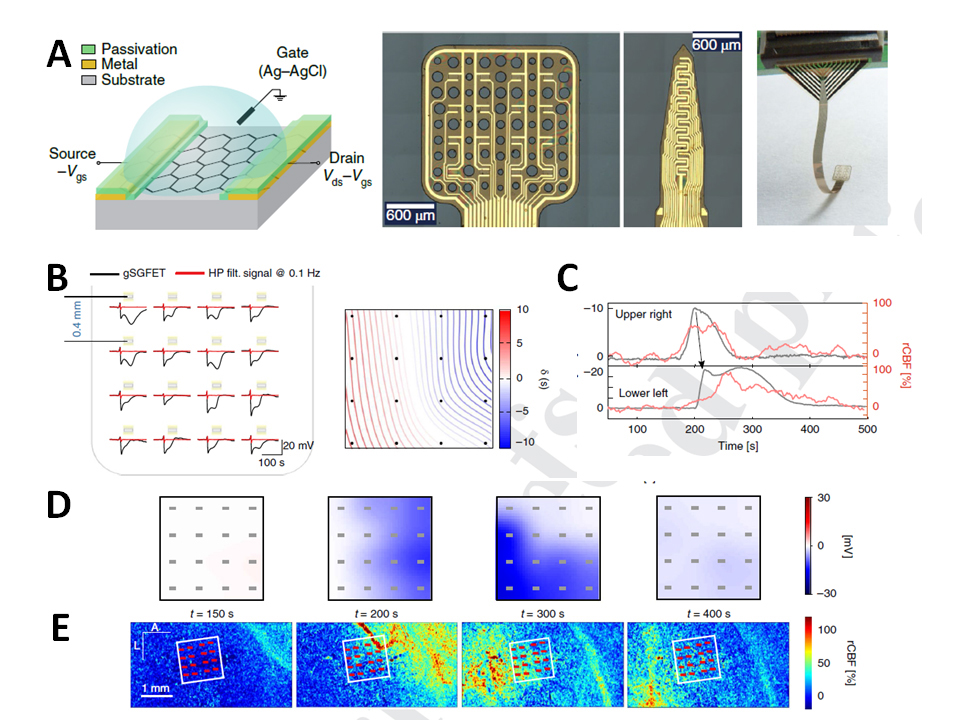Recording infraslow brain signals (<0.1 Hz) with microelectrodes is severely hampered by current microelectrode materials, primarily due to limitations resulting from voltage drift and high electrode impedance. Hence, most recording systems include high-pass filters that solve saturation issues but come hand in hand with loss of physiological and pathological information. In this work, we used flexible epicortical and intracortical arrays of graphene solution-gated field-effect transistors (gSGFETs) to map cortical spreading depression and demonstrate that gSGFETs are able to record, with high fidelity, infraslow signals together with signals in the typical local field potential bandwidth. The wide recording bandwidth results from the direct field-effect coupling of the active transistor, in contrast to standard passive electrodes, as well as from the electrochemical inertness of graphene. Taking advantage of such functionality, we envision broad applications of gSGFET technology for monitoring infraslow brain activity both in research and in the clinic.
Reference
